|
You don't
need to go to space to explore places that no man has ever been to.
Recently, an international team of scientists went on the world's first
survey to explore marine biodiversity in the abyssal waters off the east
coast of Australia.
The abyssal zone is a layer of the ocean at depths of 13,000 to 20,000
ft (4,000 to 6,000 metres). This zone remains in perpetual darkness. The
temperature there is around 36 to 37 °F (2-3 °C) and it's a very
food-limited environment. "The abyss is the largest and deepest habitat
on the planet, covering half the world's oceans and one-third of
Australia's territory, but it remains the most unexplored environment on
Earth," said Museums Victoria senior curator Tim O'Hara on the voyage's
departure.
The researchers divided themselves into two shifts (2:00─14:00 and
14:00─2:00). Tirelessly sending their equipment nearly 16,000 foot deep,
they hauled over 100 different species aboard their vessel, the
Investigator. Five of them are thought to have never been discovered
before!
Processing the catch involved separating different species,
photographing the creepy specimens to record their colors, extracting
muscle samples for DNA analysis, and so on. Commonwealth Scientific and
Industrial Research Organisation (CSIRO) ichthyologist John Pogonoski
claimed they spent many hours processing the samples. According to him,
the voyage is nothing less than "frontier science" that will undoubtedly
increase our understanding of the deep-sea. The scientists are still
busy preserving the finds for museums around the world. They will be
available for research in the future as well. While everyone's waiting
for CSIRO Australian National Fish Conference (ANFC) where names to
these faceless critters will be given, scroll down and check out some of
the spookiest from the whole gang.
|
|
Red Spiny Crab
This bright red spiny crab sports an armour of spikes which protect it
from the dangers of the deep. These are not actually true crabs but
related more to hermit crabs – although this hermit has traded in its
shell for gnarly spikes. |
|
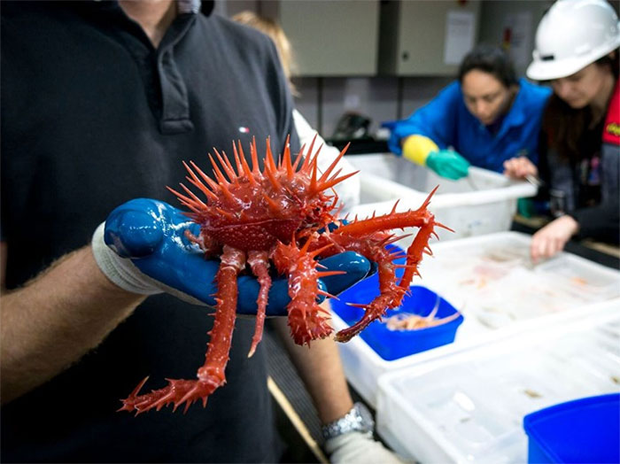 |
|
Cookiecutter Shark
This nasty little bioluminescent shark, with its neatly arranged
serrated teeth, inhabits the oceanic “twilight zone” in depths of up to
1,000 metres. It preys on big fishes, whales, dolphins and the
occasional unfortunate swimmer, latching onto them before gouging out
cookie-sized chunks of flesh. |
|

|
|
Coffinfish
This mysterious little deep-sea coffinfish, with its bluish eyes and red
feet, belongs to the anglerfish group. It is potentially a new species. |
|
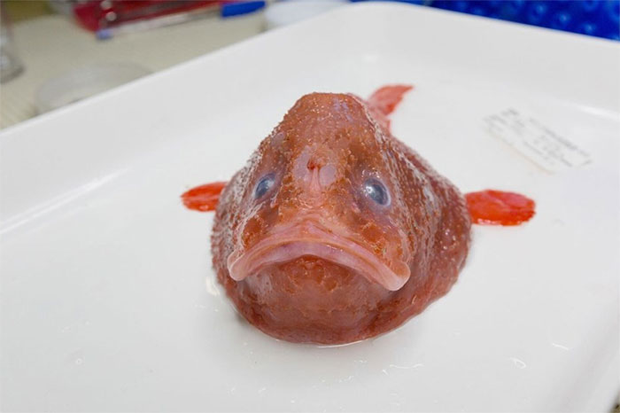
|
|
Blob Fish
This blob fish was collected from a depth of 2.5 kilometres off New
South Wales. It has soft watery flesh and is an ambush predator that
lies very still on the bottom, waiting for unsuspecting prey to pass by. |
|
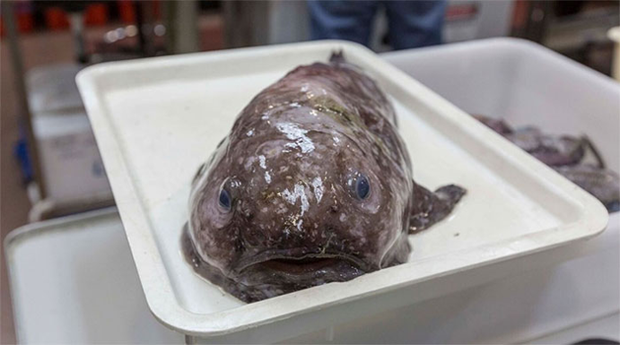 |
|
‘Faceless’ Fish
With no eyes, the “faceless” fish was found four kilometres below the
surface. The species was first collected in the northern Coral Sea more
than 140 years ago during the voyage of HMS Challenger, the world’s
first round-the-world oceanographic expedition. It has been rediscovered
in Australia after more than a century.
|
|
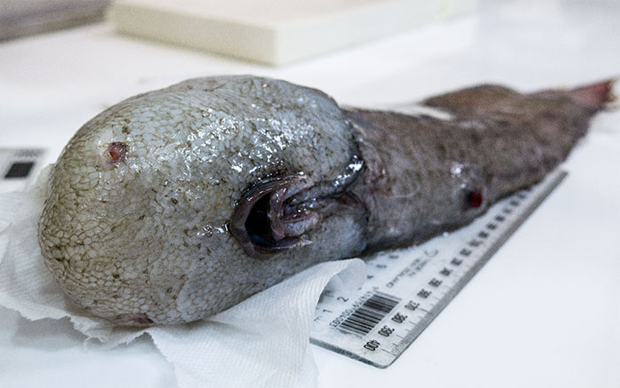 |
|
Brittle Star
The brittle star can be found right across the globe from Siberia in the
north to Antarctica in the south, yet we know almost nothing about them.
|
|
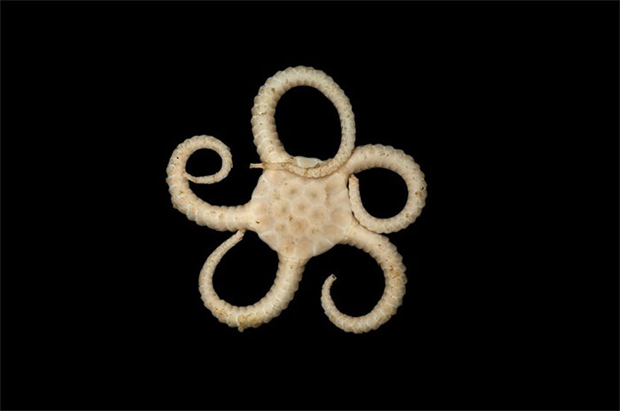 |
|
Zombie Worm
Zombie worms (Osedax) are commonly found in the decaying remains of
whales on the ocean floor, burrowing into their bones to reach the
sustenance within. With no functioning mouths, guts or anuses, they have
bacteria that digest the grisly remains for them.
|
|
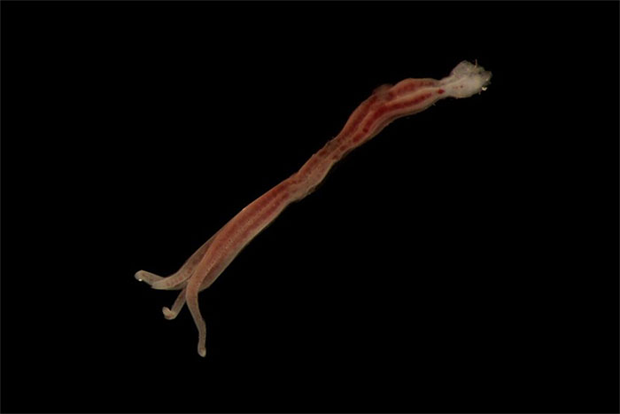 |